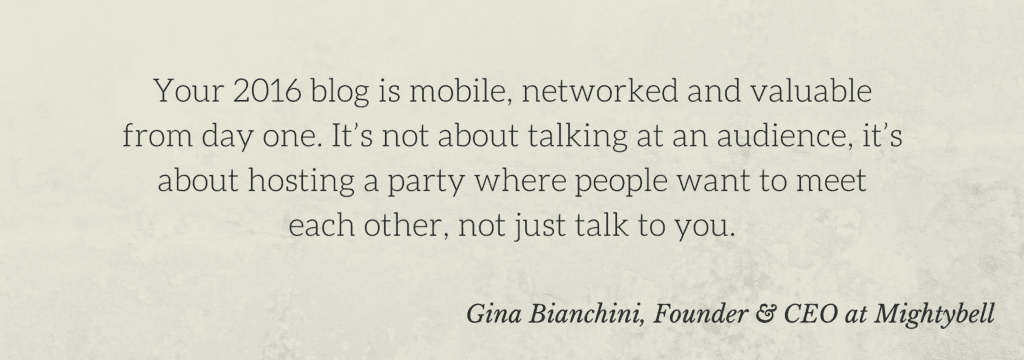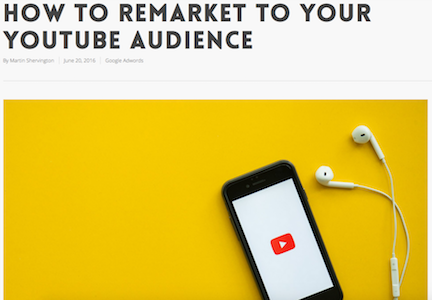5 Ways Blogging Can Increase Your Business Sales

If you think blogging can’t work for your lead generation, you might want to reconsider this powerful tool as a way to build influence and provide free advertising for your business.
A well focused content marketing strategy can bring more visitors to your website as well as build your social media following.
The latest trends in mobile usage and conversational style communication has forced us to rethink how to approach blogging as a sales tool. It has become more important to build influence in order to attract a high level of subscribers who can be converted into leads.
Writer and blogger, Courtney Patterson, points out in a recent article on The Huffington Post that while it is tempting to use methods such as publishing a lot of sponsored products posts, these types of methods won’t win a loyal audience.
Today, the new method is to engage readers on their smartphones and tablets according to Gina Bianchini, Founder & CEO at Mightybell, in an article on LinkedIn. She writes that a unique message that builds a mobile community is the new blogging driving force.

Building a thriving community takes a niche focus and interactive content that sparks a conversation. Your readers are looking for helpful information that will meet their needs, with a brand they know can relate to them on their level. Articles that are honest and full of value will garner the most response.
How to create an authentic blogging strategy:
1. Narrow your focus
It’s easy to project a broader brand message, but the Internet is overloaded with information where your company can be easily overlooked. Through target market research, find out exactly who your niche audience is and what content they find to be valuable. Transparency in your content will also encourage feedback and interest.
Martin Shervington, Founder of the B2B marketing firm, Plus Your Business, writes about the latest in SEO and social media methods. Often, he provides specific insights on platforms like YouTube, and emerging trends such as virtual reality’s enhancement to marketing:

2. Tap into your social networks
Your social media fans and followers can provide valuable insights into who your readers are and what they are looking for. Tools such as Google Analytics and Twitter Advanced Search provide insights into the types of questions they are asking, and what their pain points are. This information can help give you fresh ideas for your blog posts as well as what the competition is posting online.
3. Write catchy headlines
Keep your titles as clear and concise as possible, with phrases that people will want to read and share. Many times readers will pass by a website just because of a boring or uninteresting headline. Corey Wainwright states in an article on Hubspot that a “working title” will help you become more specific — this ultimately affects how your article is crafted.
Strong phrases that touch on your reader’s biggest interests and needs can prompt them to read your article. Here are two examples from Hubspot:
“Things People Hate”
“Brilliant”
And I’ve added a few more here:
“Absolute”
“Essential”
“Incredible”
“Tricks”
“Strange”
The use of numbers with accurate information will stand out even more. Not sure where to begin for your blog topic? There are several headline generators available for free online such as Hubspot Blog Topic Generator, SumoMe, Portent, and CoSchedule.
4. Create a regular content calendar
A consistent blogging schedule of two to three posts a week to start, will help you begin attracting more subscribers and leads for your business. Give this time — it may take a couple of months to build up your audience as you share your content on social media or email, and reach out to influencers.
As you generate article ideas, you can create your own spreadsheet – or if you use WordPress, take advantage of content calendar plugins to help manage your posts. Using this process will enable your business to test out new ideas and be more effective in reaching the right audience. A report by Content Marketing Institute shows that only 30 percent of marketers felt that their strategy was effective:

5. Share testimonials and customer experiences
Real feedback from your customers and readers is one of your greatest assets. Promote these successes on places like Snapchat, Facebook, and Instagram. People are always drawn to real stories and positive results. This not only builds a trusted reputation, but also gives your audience a personal connection with your brand.
The best way to get started in blogging and attract more sales, is to have a well-planned content strategy that appeals to a largely mobile audience. Try a mix of videos, infographics, and articles that contain valuable information that will make your readers want to know more. As you go through the publishing process, analyze what your readers are responding to the most. A relevant and attractive business blog can open the door for new opportunities, and establishes your brand as a leading authority in your industry.
Susan Gilbert
Latest posts by Susan Gilbert (see all)
- 12 SEO, Digital Marketing Automation, and Live Chat and Chatbot Tools - January 24, 2023
- 12 Time-Saving Blogging, Newsletter Creation, and SaaS Tools - November 29, 2022
- 12 Customer Communication, Instagram Brand Reach, and AI Marketing Plan Tools - October 25, 2022

